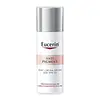What's inside
What's inside
 Key Ingredients
Key Ingredients

 Benefits
Benefits

 Concerns
Concerns

 Ingredients Side-by-side
Ingredients Side-by-side

Water
Skin ConditioningCitric Acid
BufferingButyrospermum Parkii Oil
EmollientMagnesium Laureth Sulfate
CleansingSodium Hydroxide
BufferingCellulose Acetate
Sodium Cocoamphoacetate
CleansingMethylpropanediol
SolventAcrylates/C10-30 Alkyl Acrylate Crosspolymer
Emulsion StabilisingCoco-Glucoside
CleansingGlyceryl Oleate
EmollientSodium Cocoyl Glutamate
CleansingXanthan Gum
EmulsifyingSodium Citrate
BufferingBenzoic Acid
MaskingPropanediol
SolventAcrylates/Vinyl Isodecanoate Crosspolymer
Emulsion StabilisingMannitol
HumectantXylitol
HumectantRhamnose
HumectantTocopherol
AntioxidantHelianthus Annuus Seed Oil
EmollientLysine
Skin ConditioningAzelaic Acid
BufferingAndrographis Paniculata Leaf Extract
AstringentFructooligosaccharides
HumectantCaprylic/Capric Triglyceride
MaskingHydrogenated Palm Glycerides Citrate
EmollientLaminaria Ochroleuca Extract
Skin ConditioningParfum
MaskingWater, Citric Acid, Butyrospermum Parkii Oil, Magnesium Laureth Sulfate, Sodium Hydroxide, Cellulose Acetate, Sodium Cocoamphoacetate, Methylpropanediol, Acrylates/C10-30 Alkyl Acrylate Crosspolymer, Coco-Glucoside, Glyceryl Oleate, Sodium Cocoyl Glutamate, Xanthan Gum, Sodium Citrate, Benzoic Acid, Propanediol, Acrylates/Vinyl Isodecanoate Crosspolymer, Mannitol, Xylitol, Rhamnose, Tocopherol, Helianthus Annuus Seed Oil, Lysine, Azelaic Acid, Andrographis Paniculata Leaf Extract, Fructooligosaccharides, Caprylic/Capric Triglyceride, Hydrogenated Palm Glycerides Citrate, Laminaria Ochroleuca Extract, Parfum
Water
Skin ConditioningHomosalate
Skin ConditioningAlcohol Denat.
AntimicrobialButyl Methoxydibenzoylmethane
UV AbsorberEthylhexyl Salicylate
UV AbsorberEthylhexyl Triazone
UV AbsorberBis-Ethylhexyloxyphenol Methoxyphenyl Triazine
Skin ConditioningButylene Glycol
HumectantPropylene Glycol Dicaprylate/Dicaprate
EmollientTapioca Starch
Distarch Phosphate
AbsorbentC12-15 Alkyl Benzoate
AntimicrobialPhenylbenzimidazole Sulfonic Acid
UV AbsorberIsobutylamido Thiazolyl Resorcinol
BleachingGlycyrrhiza Inflata Root Extract
Skin ConditioningTocopherol
AntioxidantGlucosylrutin
AntioxidantIsoquercitrin
AntioxidantGlycerin
HumectantCetyl Alcohol
EmollientStearyl Alcohol
EmollientSodium Chloride
MaskingXanthan Gum
EmulsifyingCarbomer
Emulsion StabilisingSodium Hydroxide
BufferingGlyceryl Stearate
EmollientSodium Stearoyl Glutamate
CleansingDimethicone
EmollientPhenoxyethanol
PreservativeTrisodium EDTA
Parfum
MaskingWater, Homosalate, Alcohol Denat., Butyl Methoxydibenzoylmethane, Ethylhexyl Salicylate, Ethylhexyl Triazone, Bis-Ethylhexyloxyphenol Methoxyphenyl Triazine, Butylene Glycol, Propylene Glycol Dicaprylate/Dicaprate, Tapioca Starch, Distarch Phosphate, C12-15 Alkyl Benzoate, Phenylbenzimidazole Sulfonic Acid, Isobutylamido Thiazolyl Resorcinol, Glycyrrhiza Inflata Root Extract, Tocopherol, Glucosylrutin, Isoquercitrin, Glycerin, Cetyl Alcohol, Stearyl Alcohol, Sodium Chloride, Xanthan Gum, Carbomer, Sodium Hydroxide, Glyceryl Stearate, Sodium Stearoyl Glutamate, Dimethicone, Phenoxyethanol, Trisodium EDTA, Parfum
 Reviews
Reviews

Ingredients Explained
These ingredients are found in both products.
Ingredients higher up in an ingredient list are typically present in a larger amount.
Parfum is a catch-all term for an ingredient or more that is used to give a scent to products.
Also called "fragrance", this ingredient can be a blend of hundreds of chemicals or plant oils. This means every product with "fragrance" or "parfum" in the ingredients list is a different mixture.
For instance, Habanolide is a proprietary trade name for a specific aroma chemical. When used as a fragrance ingredient in cosmetics, most aroma chemicals fall under the broad labeling category of “FRAGRANCE” or “PARFUM” according to EU and US regulations.
The term 'parfum' or 'fragrance' is not regulated in many countries. In many cases, it is up to the brand to define this term.
For instance, many brands choose to label themselves as "fragrance-free" because they are not using synthetic fragrances. However, their products may still contain ingredients such as essential oils that are considered a fragrance by INCI standards.
One example is Calendula flower extract. Calendula is an essential oil that still imparts a scent or 'fragrance'.
Depending on the blend, the ingredients in the mixture can cause allergies and sensitivities on the skin. Some ingredients that are known EU allergens include linalool and citronellol.
Parfum can also be used to mask or cover an unpleasant scent.
The bottom line is: not all fragrances/parfum/ingredients are created equally. If you are worried about fragrances, we recommend taking a closer look at an ingredient. And of course, we always recommend speaking with a professional.
Learn more about ParfumSodium Hydroxide is also known as lye or caustic soda. It is used to adjust the pH of products; many ingredients require a specific pH to be effective.
In small amounts, sodium hydroxide is considered safe to use. However, large amounts may cause chemical burns due to its high alkaline.
Your skin has a natural pH and acid mantle. This acid mantle helps prevent harmful bacteria from breaking through. The acid mantle also helps keep your skin hydrated.
"Alkaline" refers to a high pH level. A low pH level would be considered acidic.
Learn more about Sodium HydroxideTocopherol (also known as Vitamin E) is a common antioxidant used to help protect the skin from free-radicals and strengthen the skin barrier. It's also fat soluble - this means our skin is great at absorbing it.
Vitamin E also helps keep your natural skin lipids healthy. Your lipid skin barrier naturally consists of lipids, ceramides, and fatty acids. Vitamin E offers extra protection for your skin’s lipid barrier, keeping your skin healthy and nourished.
Another benefit is a bit of UV protection. Vitamin E helps reduce the damage caused by UVB rays. (It should not replace your sunscreen). Combining it with Vitamin C can decrease sunburned cells and hyperpigmentation after UV exposure.
You might have noticed Vitamin E + C often paired together. This is because it is great at stabilizing Vitamin C. Using the two together helps increase the effectiveness of both ingredients.
There are often claims that Vitamin E can reduce/prevent scarring, but these claims haven't been confirmed by scientific research.
Learn more about TocopherolWater. It's the most common cosmetic ingredient of all. You'll usually see it at the top of ingredient lists, meaning that it makes up the largest part of the product.
So why is it so popular? Water most often acts as a solvent - this means that it helps dissolve other ingredients into the formulation.
You'll also recognize water as that liquid we all need to stay alive. If you see this, drink a glass of water. Stay hydrated!
Learn more about WaterXanthan gum is used as a stabilizer and thickener within cosmetic products. It helps give products a sticky, thick feeling - preventing them from being too runny.
On the technical side of things, xanthan gum is a polysaccharide - a combination consisting of multiple sugar molecules bonded together.
Xanthan gum is a pretty common and great ingredient. It is a natural, non-toxic, non-irritating ingredient that is also commonly used in food products.
Learn more about Xanthan Gum